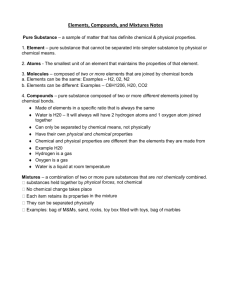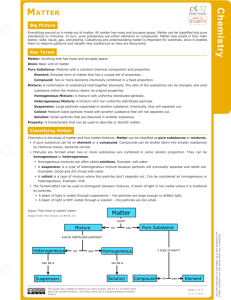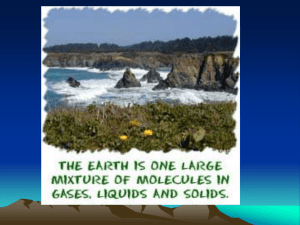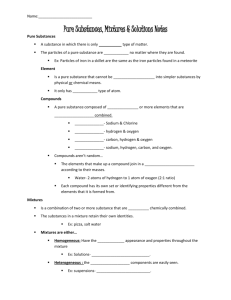Pure Substances and Mixtures (pg 18-21)
advertisement
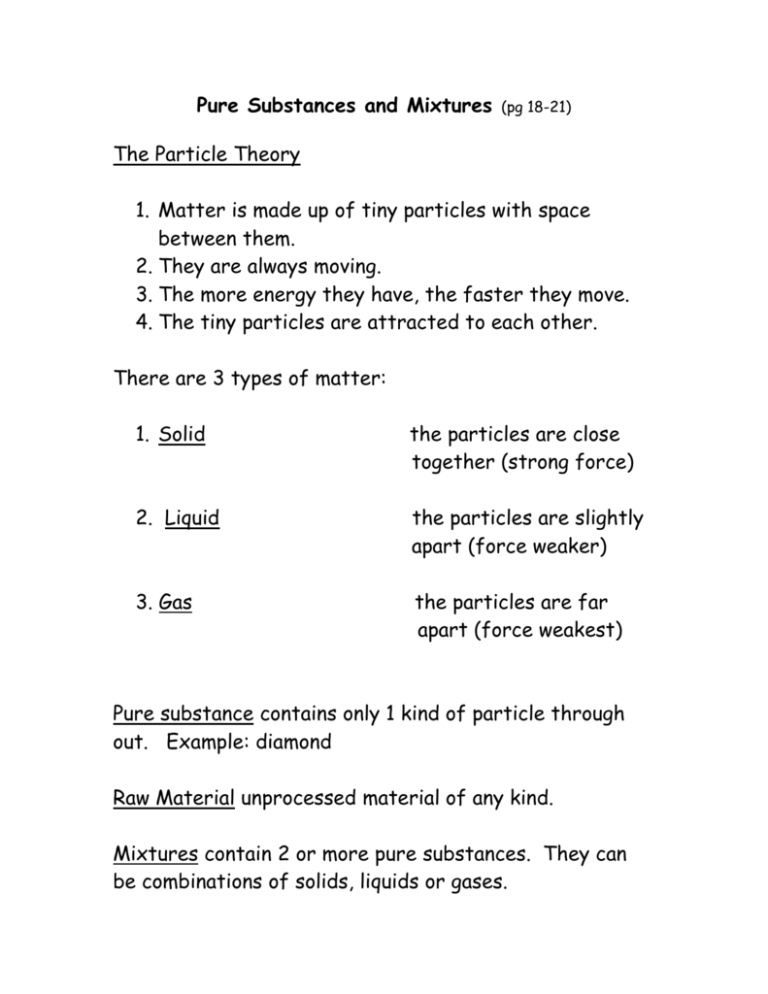
Pure Substances and Mixtures (pg 18-21) The Particle Theory 1. Matter is made up of tiny particles with space between them. 2. They are always moving. 3. The more energy they have, the faster they move. 4. The tiny particles are attracted to each other. There are 3 types of matter: 1. Solid the particles are close together (strong force) 2. Liquid the particles are slightly apart (force weaker) 3. Gas the particles are far apart (force weakest) Pure substance contains only 1 kind of particle through out. Example: diamond Raw Material unprocessed material of any kind. Mixtures contain 2 or more pure substances. They can be combinations of solids, liquids or gases. Example: Pop water-- liquid Sugar--solid Carbon dioxide—gas Bread --- yeast, flour, sugar, water, air and other chemicals. Heterogeneous Mixtures—are uneven mixtures that contain 2 or more substances that can be seen or felt. Also known as a mechanical mixture. Example: concrete or granola. Homogeneous Mixtures—particles of pure substances mixed together so completely that the mixture looks and feel as though it is made of only one substance. Also known as a solution. Example: Steel—made from iron, oxygen and carbon. In a solution (sugar and water), one substance has to be mixed or dissolved into another. The substance that dissolves (sugar) is called the solute. The substance into which they are dissolved (water) is called the solvent. Questions: (pg 18-21) 1. Is our drinking water pure? Explain. 2. Describe the particles in a solid, liquid and gas. 3. Where does aluminum come from? 4. What is the difference between a homogeneous mixture and a heterogeneous mixture? 5. What is another name for a heterogeneous mixtures and a homogeneous mixture? 6. Solutions can be solids, liquids and gases. Give an example of each. 7. How is brass made and why is zinc added? Which one is the solute and solvent?




